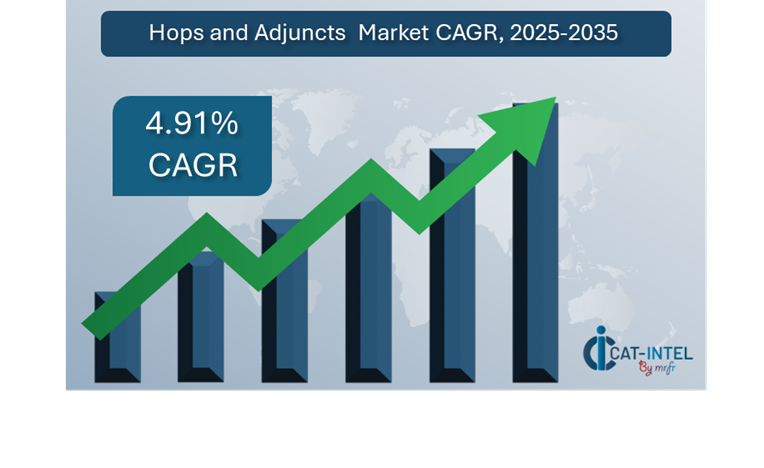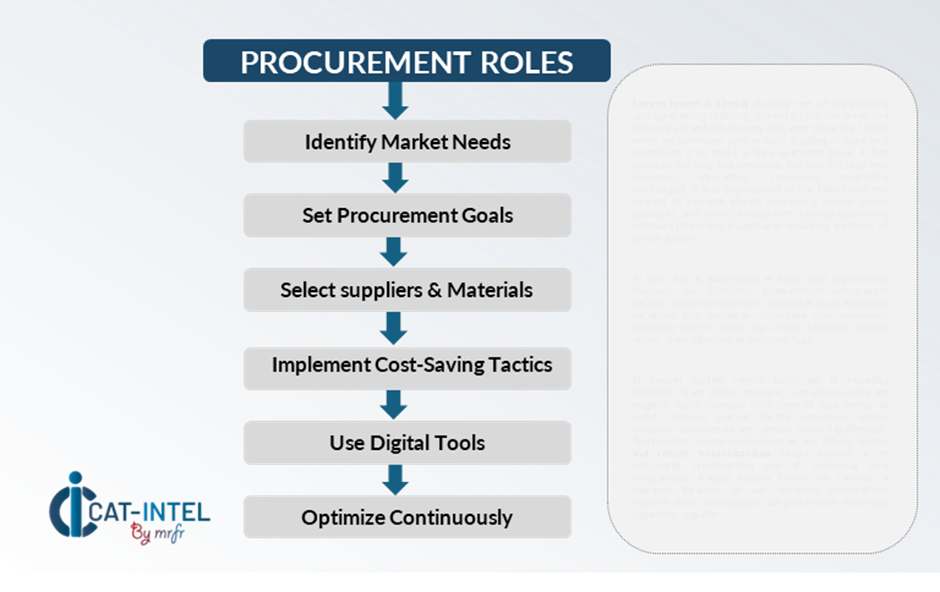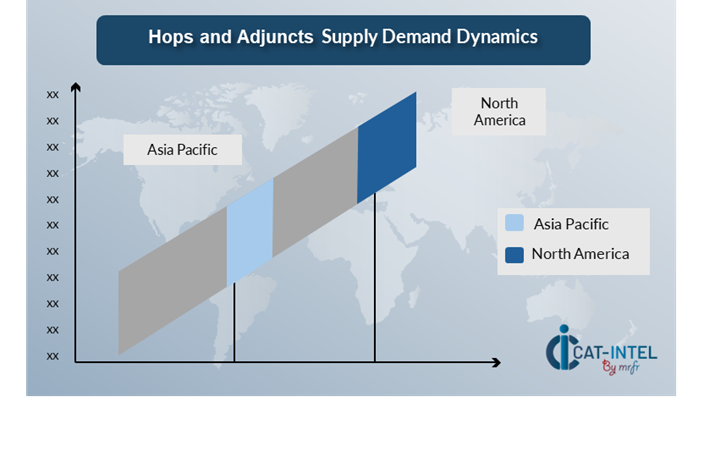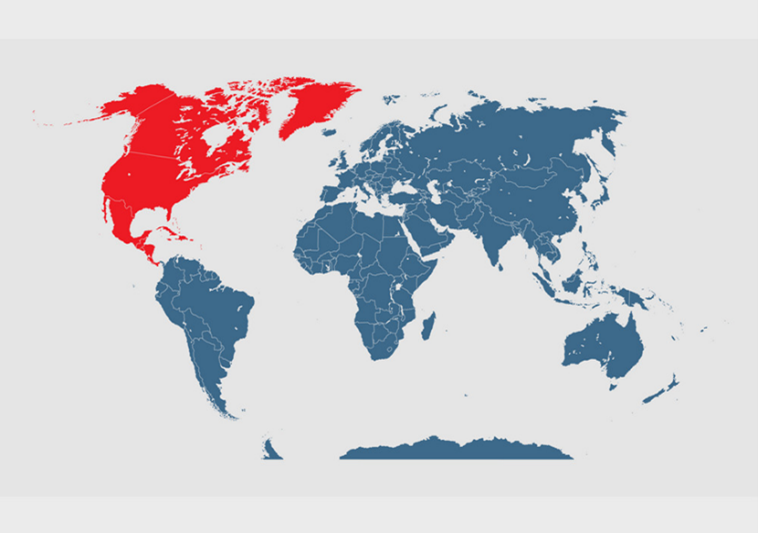Summary Overview
Hops and Adjuncts Market Overview:
The global hops & adjuncts market is steadily growing, driven by rising demand in industries such as brewing, food preparation, and drinks. This market contains a wide range of hops and adjuncts, including bittering hops, flavour hops, and specialty adjuncts. Our research provides an in-depth analysis of procurement trends, with a particular emphasis on cost-cutting initiatives and the use of digital tools to improve procurement and operational procedures.
Key problems in the hops and adjuncts business include managing supply chain costs, assuring product quality, ensuring sustainability, and incorporating new methods of sourcing into existing production systems. Modern procurement platforms and effective sourcing are critical in maximizing hop and ancillary acquisition, resulting in a long-term competitive advantage.
Market Size: The global Hops and Adjuncts market is projected to reach USD 117.3 billion by 2035, growing at a CAGR of approximately 4.91% from 2025 to 2035.

-
Sector Contributions: Growth in the market is driven by: -
Manufacturing and Supply Chain Optimization: The increasing demand for real-time data and better process integration is critical to simplifying operations in the hops and adjuncts supply chain.
-
Retail and E-Commerce Growth: The growth of online and retail channels is boosting demand for effective inventory management, demand forecasting, and CRM.
-
Technological Advancements: AI and machine learning are improving capacity for decision-making in the hops and adjuncts industry.
-
Innovations: Modular systems enable hop producers and suppliers to integrate exactly the functionalities they need, lowering costs and complexity.
-
Investment Initiatives: Companies are progressively investing in cloud-based systems to minimize infrastructure costs, improve accessibility, and boost agility in the hops and adjuncts industry.
-
Regional Insights: North America and Asia Pacific remain important players in the hops and adjuncts market, owing to robust digital infrastructures and fast use of cloud-based solutions.
Key Trends and Sustainability Outlook:
-
Cloud Integration: Cloud technology enables scalability, cost effectiveness, and real-time data access, which are critical for meeting market demand and regulatory needs.
-
Advanced Features: Artificial intelligence, Internet of Things, and blockchain technologies are being integrated into the hops and adjuncts supply chain. These technologies improve decision-making, streamline production processes, and increase supply chain transparency.
-
Focus on Sustainability: Sustainability is becoming more essential. The hops business uses innovative resource management systems to ensure effective water use, utilization of energy, and waste reduction.
-
Customization Trends: There is an increasing desire for industry-specific solutions suited to the specific requirements of hops and adjuncts producers.
- Data-Driven Insights: Advanced analytics improves the capacity to estimate demand, optimize production schedules, and monitor operational performance.
Growth Drivers:
-
Digital Transformation: The use of digital technologies is revolutionizing the hops and adjuncts business by increasing production, lowering errors, and improving information flow throughout the supply chain.
-
Demand for Process Automation: As the hops business expands, so does the need for automation in crucial processes including harvesting, sorting, and quality control.
-
Scalability Requirements: As worldwide demand for hops and adjuncts grows, organizations want adaptable solutions to handle higher volumes, more complex logistics, and regulatory compliance.
-
Regulatory Compliance: As rules in the agricultural and beverage industries become more complicated, organizations must implement solutions to assure compliance. -
Globalization: The hops and adjuncts market is becoming more global, with demand spanning several locations. To support their expanding global reach, they need systems that can handle many currencies, languages, and international trade compliance.
Overview of Market Intelligence Services for the Hops and Adjuncts Market:
Recent investigations have identified important problems in the hops and adjuncts business, including high procurement costs and the necessity for specific sourcing strategies. Market intelligence studies provide useful insights into procurement opportunities, assisting businesses in identifying cost-saving initiatives, optimizing supplier relationships, and increasing procurement efficiency. These insights also help to guarantee that quality standards, environmental goals, and regulatory compliance are met while keeping costs under control.
Procurement Intelligence for Hops and Adjuncts: Category Management and Strategic Sourcing
To remain competitive in the hops and adjuncts industry, organizations are streamlining procurement procedures through spend data analysis and supplier performance monitoring. Effective category management and strategic sourcing are critical for reducing procurement costs and ensuring a steady supply of high-quality hops and adjuncts. Companies that use actionable market intelligence can optimize their procurement strategy, negotiate advantageous contracts with suppliers, and improve operational efficiency in procuring vital materials for production. Strategic sourcing and category management enable firms to prioritize the most efficient suppliers, resulting in timely delivery and fewer supply chain disruptions.

Pricing Outlook for Hops and Adjuncts: Spend Analysis
The pricing outlook for hops and adjuncts are projected to fluctuate moderately due to a variety of causes. Technological developments in manufacturing techniques, the rising need for sustainable and high-quality ingredients regional pricing variations, and market conditions. Furthermore, greater demand to fulfill environmental and regulatory standards, as well as increased incorporation of new technology, are projected to drive up prices over time.
Graph shows general upward trend pricing for Hops and Adjuncts and growing demand. However, there may be fluctuations influenced by economic conditions, technological advancements, and competitive dynamic.

Efforts to decrease costs in the hops and adjuncts sector are cantered on streamlining procurement procedures, enhancing supplier management, and implementing more flexible procurement techniques. Analytics for market monitoring, pricing forecasting, and data-driven purchasing decisions can assist firms in better anticipating price volatility and optimizing procurement methods.
Developing good connections with dependable suppliers, negotiating long-term contracts, and investigating alternative payment models such as subscription-based or volume reductions are all crucial to preserving cost efficiency. Scalability becomes increasingly important as the demand for hops and adjuncts develops. Companies must ensure that their supply chains and operations are ready to handle increased volumes while maintaining cost control.
Cost Breakdown for Hops and Adjuncts: Total Cost of Ownership (TCO) and Cost-Saving Opportunities

- Raw Material: (40%)
-
Description: This includes the direct cost of hops as well as adjunct components including grains, fruits, spices, and other flavour enhancers. Hops prices vary based on variety, quality, and growing conditions.
-
Trend: Rising demand for specialized hop types, notably from the craft beer industry, has resulted in increased pricing for premium hops. - Transportation & Logistics: (XX%)
- Processing and Quality Control: (XX%)
- Supplier and Vendor Management: (XX%)
Cost-Saving Opportunities: Negotiation Levers and Purchasing Negotiation Strategies
In the hops and adjuncts industry, streamlining procurement processes and implementing strategic sourcing strategies can result in significant cost savings and increased operational efficiency. Establishing long-term partnerships with suppliers, particularly those who provide sustainable and high-quality products, can result in more attractive price structures and terms, such as volume-based discounts and bundled services.
Negotiating multi-year contracts with suppliers, particularly those selling premium or specialist products, allows you to lock in reduced rates and reduce price changes over time. These agreements provide a consistent supply and help to prevent surprise price rises, which are typical in agricultural markets. Relying on a single supplier might raise risk, particularly in a market with unpredictable agricultural output and changing rules. A diverse, multi-vendor model guarantees that organizations are not unduly reliant on a single provider and allows them greater bargaining power.

Supply and Demand Overview for Hops and Adjuncts: Demand-Supply Dynamics and Buyer Intelligence for Effective Supplier Relationship Management (SRM)
The hops and adjuncts market is also growing steadily, owing to factors such as technological advancements in agriculture and increased demand for craft beverages. Climate conditions, regional production capabilities, and shifts in consumer preferences all have an impact on supply and demand dynamics in this market.
Demand Factors:
-
Consumer Preferences: The increased demand for craft beers, specialized beverages, and sustainable food products is pushing the need for high-quality hops and additives.
-
Sustainability and Organic Sourcing: Breweries and beverage manufacturers are increasingly looking for sustainable ingredients that correspond with their environmental goals, driving up demand for eco-friendly sourcing.
-
Regulatory Standards: As the food and beverage industries face increased regulatory scrutiny, hops and adjunct suppliers must adhere to stringent quality, traceability, and safety criteria.
-
Customization Needs: Breweries and beverage producers want hops and adjuncts that are customized to specific production requirements, such as flavour profiles, bitterness levels, and fragrance qualities.
Supply Factors:
-
Technological Advances in Agriculture: Farming technology innovations including as precision agriculture, automation, and superior breeding procedures are improving hops and adjuncts' efficiency and quality.
-
Vendor Ecosystem: The hops and adjuncts industry are growing more competitive, with a wide range of suppliers—from large-scale producers to smaller, niche growers—offering various types of hops, adjuncts, and blends.
-
Climate Conditions and Regional Factors: Regions that have traditionally produced high-quality hops, such as the Pacific Northwest in the United States and portions of Europe, may experience problems such as droughts or extreme weather events, which can affect yields and costs.
-
Scalability and Flexibility: Modern hops production processes are becoming more versatile, allowing producers to accommodate changing demand and supply requirements, such as smaller batches or specialist varieties for niche markets.
Regional Demand-Supply Outlook: Hops and Adjuncts
The Image shows growing demand for Hops and Adjuncts in both North America and Asia Pacific, with potential price increases and increased Competition.

North America: Dominance in the Hops and Adjuncts Market
North America, particularly the United States, is a dominant force in the global Hops and Adjuncts market due to several key factors:
-
Thriving Craft Beer Industry: Craft breweries rely heavily on hops and adjuncts to generate distinctive and diverse beer flavours, which drives demand for high-quality ingredients.
-
Strong Agricultural Infrastructure: The region has suitable temperatures and well-developed farming technologies, resulting in a consistent supply of high-quality hops for domestic and international markets.
-
Consumer Preference Quality and Variety: The region's demand for quality hops and specialized adjuncts, including as fruits, spices, and grains, is expanding as consumers seek organic, sustainably sourced, and locally grown ingredients
-
Brewing Technological Advances: North America is at the forefront of brewing innovation, incorporating cutting-edge technology such as improved brewing equipment, IoT (Internet of Things) solutions for quality management, and machine learning for flavour optimization.
-
Robust Export and Trade Networks: The United States is one of the world's top hop exporters, and its position as a key supplier contributes to North America's supremacy in the hops and adjuncts market.
North America Remains a key hub Hops and Adjuncts Price Drivers Innovation and Growth.

Supplier Landscape: Supplier Negotiations and Strategies
The hops and adjuncts industry has a diversified and competitive supplier landscape, which includes both large-scale worldwide suppliers and smaller, specialist sources. These sources influence cost, product customization, and service quality. The industry is distinguished by significant manufacturers supplying enormous quantities of hops and adjuncts, while specialized providers focus on distinctive products, sustainable practices, and industry-specific needs. Well-established global vendors dominate the market, producing and distributing hops and adjuncts on a vast scale. These suppliers are critical in addressing the demands of large-scale breweries and beverage producers, providing a diverse range of hops and adjuncts at competitive costs thanks to economies of scale.
As customer demand for sustainable and ecologically friendly goods grows, so does the number of providers focused on organic and responsibly cultivated hops and adjuncts. These suppliers are innovating in farming practices, utilizing precision agriculture, and implementing eco-friendly approaches to fulfil the beverage industry's growing demand for sustainable sourcing. The emergence of novel technology, flexible pricing models, and industry-specific solutions sets the hops and adjuncts market for further evolution as firms search for efficiency and personalization and high-quality products.
Key Suppliers in the Hops and Adjuncts Market Include:
- Yakima Chief Hops
- Hop Steiner
- Barth Haas
- Sierra Nevada Brewing Company
- Charles Faram
- Moxie Hops
- Saaz Hops (Czech Republic)
- Humulus Lupulus GmbH
- National Hops
- Trekker Hops

Key Developments Procurement Category Significant Development:
Significant Development |
Description |
Market Growth |
The hops and adjuncts market is also expanding significantly as businesses in the brewing, beverage, and food industries rely more on high-quality ingredients to fulfil changing consumer demands |
Cloud Adoption |
Cloud-based solutions are also gaining traction in the hops and adjuncts business. These technologies enable producers to monitor crop health, manage inventories, and optimize logistics in real time. |
Product Innovation |
New strains of hops with different flavours, as well as improved adjuncts that improve beverage characteristics, are gaining popularity in craft brewing and other beverage industries. |
Technological Advancements |
In agriculture, advancements such as machine learning for crop yield prediction, IoT-enabled soil monitoring, and robotic harvesting systems are improving hop production capacities. |
Global Trade Dynamics |
Changes in trade policy, tariffs, and supply chain rules have an impact on hop and adjunct sourcing and pricing, particularly for multinational beverage makers with complex ingredient supply networks. |
Customization Trends |
From distinct hops for craft beer flavour profiles to specific adjuncts for non-alcoholic beverages, there is an increasing movement toward bespoke ingredient solutions to fulfil customers' different needs. |
Hops and Adjuncts Attribute/Metric |
Details |
Market Sizing |
The global Hops and Adjuncts market is projected to reach USD 117.3 billion by 2035, growing at a CAGR of approximately 4.91% from 2025 to 2035. |
Hops and Adjuncts Technology Adoption Rate |
Around 60% of breweries worldwide are using specialist hops and adjuncts to improve flavour profiles and meet changing customer demands, including organic and locally produced choices. |
Top Hops and Adjuncts Industry Strategies for 2025 |
Many hop suppliers are investing in sustainable farming practices and water conservation technologies to suit rising consumer demand for environmentally friendly products. To meet rising demand, hops providers are concentrating on generating new strains with distinct flavor qualities. |
Hops and Adjuncts Process Automation |
Approximately half of hop and adjunct suppliers use automated technology in their agricultural and production processes. These systems are employed for operations like as crop monitoring, harvesting, and inventory management, resulting in increased efficiency and lower labour costs.
|
Hops and Adjuncts Process Challenges |
Weather-related risks like droughts and floods, supply chain disruptions, and the high expense of sustainable farming practices are all significant challenges. Furthermore, maintaining constant quality while satisfying rising regulatory demands for organic certification. |
Key Suppliers |
Yakima Chief Hops, Hop Steiner, and BarthHaas are among the world's leading hops and adjunct suppliers, supplying specialized and organic types to fulfil niche market demands. |
Key Regions Covered |
North America and Asia Pacific are important growing markets for hops and adjuncts. The United States and Europe are at the forefront of the craft beer movement, while rising Asian countries are seeing an increase in demand for international beverage variety. |
Market Drivers and Trends |
Craft brewing's growing popularity, customer demand for environmentally friendly and high-quality ingredients, and the growth of specialist beverages(e.g., gluten-free, low-alcohol, organic) are major drivers of growth in the hops and adjuncts market.
|

